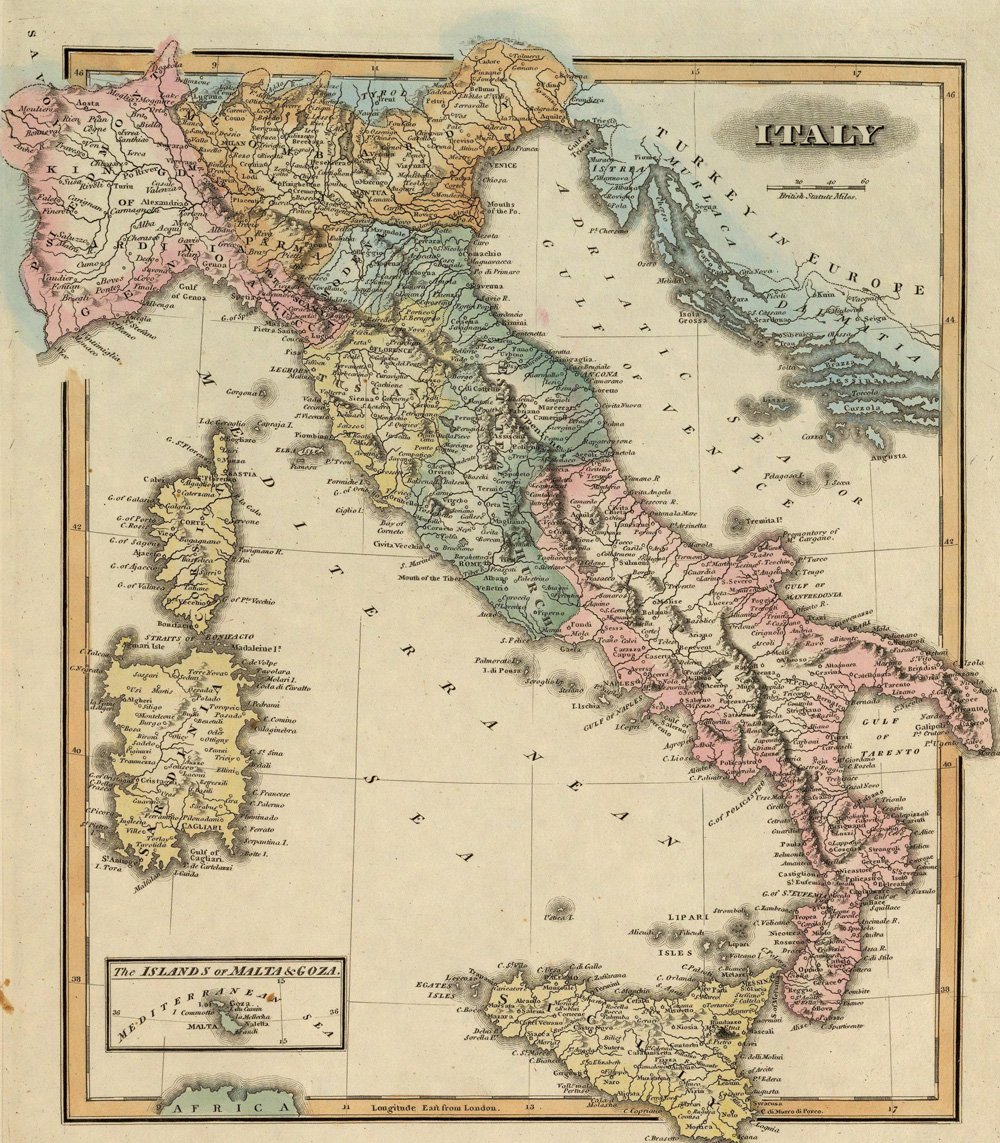Sign up for the Family Tree Newsletter Plus, you’ll receive our 10 Essential Genealogy Research Forms PDF as a special thank you!
Get Your Free Genealogy Forms
"*" indicates required fields
Like Germany, “Italy” didn’t exist as a nation-state until the mid-to-late 1870s. Before unification, a handful of kingdoms, duchies and principalities dotted the Italian peninsula. Knowing which your ancestor lived in is key to researching your Italian genealogy. This historical map of Italy tells part of the story.

Italian city-states
This map from 1823 highlights the various Italian states in different colors. As you can see, one kingdom (the Kingdom of the Two Sicilies) dominated southern Italy. As the name implies, the kingdom included the island of Sicily (Sicilia), as well as Naples (Napoli). But northern Italy was made up of four primary states, most of which were under Austrian influence:
- the Kingdom of Lombardy-Venetia, which included Venice (Venetia) and Milan (Milano)
- the Kingdom of Sardinia, which included the Piedmont (Piemonte), Savoy and Nice
- the Grand Duchy of Tuscany, which included Florence (Firenze), Genoa (Genova) and Siena
- the Papal States, which included Rome (Roma)
Though the map doesn’t make it clear, three smaller duchies also made up northern Italy: Parma, Lucca and Modena and Reggio.
Political boundaries on the Italian peninsula didn’t change much between this map’s creation and Italian unification, which began in earnest in 1860. Even after unification, these regions remained important to Italian culture and administration. Many are even provinces in the modern Italian Republic.
Finding your Italian town of origin
To research your ancestors in Italy, you’ll need to correctly identify his town of origin. And to do that, you’ll need to know which region your ancestor called home. Fortunately, your ancestor may have identified a region on a passenger list or naturalization document rather than the nation of Italy, giving you an easy answer. Knowing which region your ancestor lived in can also help you determine what language records will be in. Northern Italian records created during Austrian rule might be in German. Likewise, records from Sicily, Sardinia and the Piedmont might be in Spanish since Spain ruled these areas.
ADVERTISEMENT




